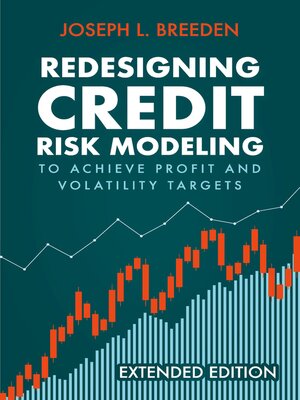Redesigning Credit Risk Modeling to Achieve Profit and Volatility Targets
ebook
By Joseph L. Breeden

Sign up to save your library
With an OverDrive account, you can save your favorite libraries for at-a-glance information about availability. Find out more about OverDrive accounts.
Find this title in Libby, the library reading app by OverDrive.



Search for a digital library with this title
Title found at these libraries:
| Library Name | Distance |
|---|---|
| Loading... |
Why does performance by bureau score change so radially through the credit cycle? Why do we have cut-off scores? Why do machine learning models degrade so fast when deployed, and do they need to? What is the real purpose of alternate data? What are the true dimensions of borrower behavior that we need to understand? Why isn't forecast uncertainty included in underwriting? Why do applications of Modern Portfolio Theory fail for loan portfolios?
These questions and many more are answered in this integrated approach to credit risk analytics. Credit risk analysts are not tapping the real power of machine learning and alternate data, because their models are built in a 1960s scoring architecture. Changing the architecture not only solves problems of overfitting and out-of-time degradation, but it also turns machine learning models into cash flow forecasters that integrate directly with yield and NPV models in finance. When account-level forecasts directly predict yield, underwriting decisions can be based on financial targets directly, rather than judgmental, backward-looking score cutoffs.
The material is presented conceptually with a focus on analytic methods with business value. To solve these decades-long mysteries, the industry must break free of the 1960s mindset of how analytics should be used in credit risk, and this book lights the way.







